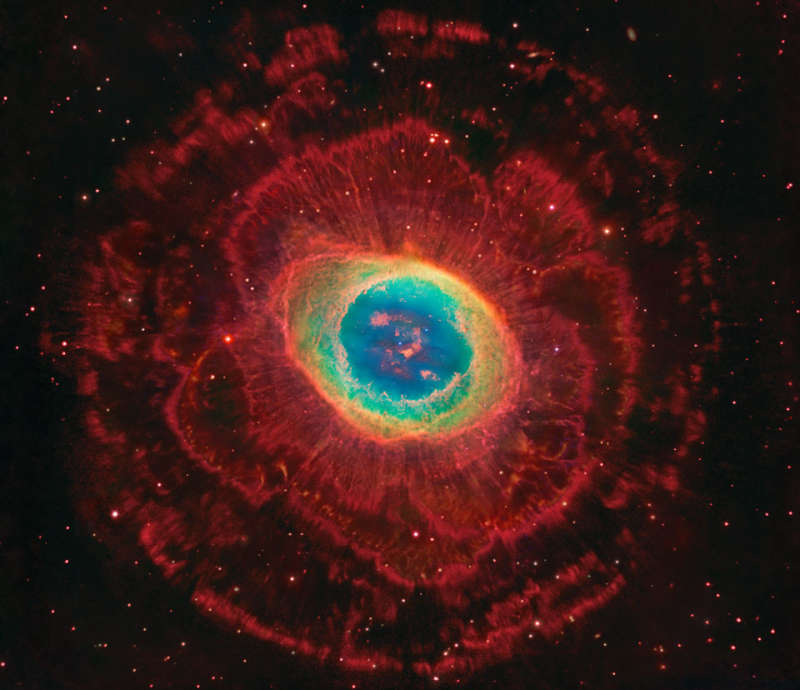Credit & Copyright: Robert Gendler
Explanation:
It is a familiar sight to sky enthusiasts with even a small telescope.
There is much more to the
Ring Nebula (M57),
however, than can be seen through a
small telescope.
The easily visible
central ring is about one
light-year across,
but this remarkably deep exposure -
a collaborative effort combining data from three different large telescopes -
explores
the looping filaments
of glowing gas extending much farther from the nebula's
central star.
This remarkable
composite image includes narrowband hydrogen image,
visible light emission, and
infrared light emission.
Of course, in this
well-studied
example of a
planetary nebula,
the glowing material does not come from planets.
Instead, the
gaseous shroud represents outer layers
expelled from a dying, sun-like star.
The Ring Nebula is about 2,000 light-years away toward the musical
constellation
Lyra.
Follow APOD on:
Facebook,
Google Plus,
or
Twitter
1999 2000 2001 2002 2003 2004 2005 2006 2007 2008 2009 2010 2011 2012 2013 2014 2015 2016 2017 2018 2019 2020 2021 2022 2023 2024 2025 |
Yanvar' Fevral' Mart Aprel' Mai Iyun' Iyul' Avgust Sentyabr' Oktyabr' Noyabr' Dekabr' |
NASA Web Site Statements, Warnings, and Disclaimers
NASA Official: Jay Norris. Specific rights apply.
A service of: LHEA at NASA / GSFC
& Michigan Tech. U.
|
Publikacii s klyuchevymi slovami:
Ring Nebula - deep field - Planetarnaya tumannost'
Publikacii so slovami: Ring Nebula - deep field - Planetarnaya tumannost' | |
Sm. takzhe:
Vse publikacii na tu zhe temu >> | |
